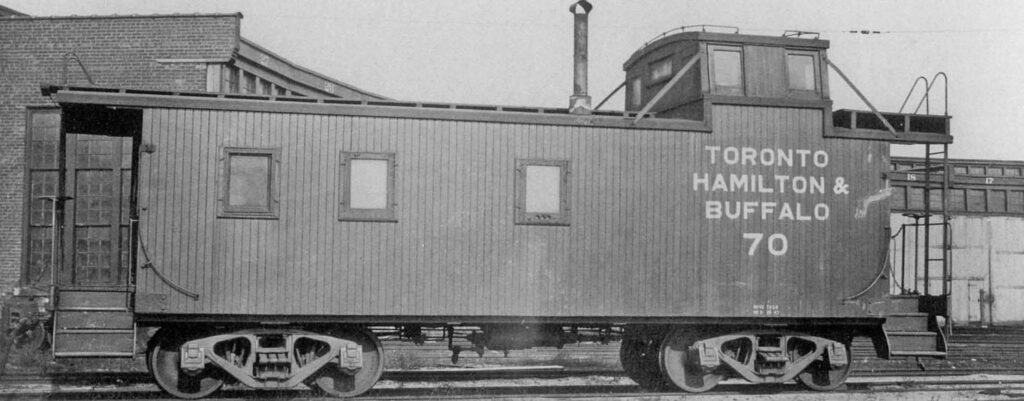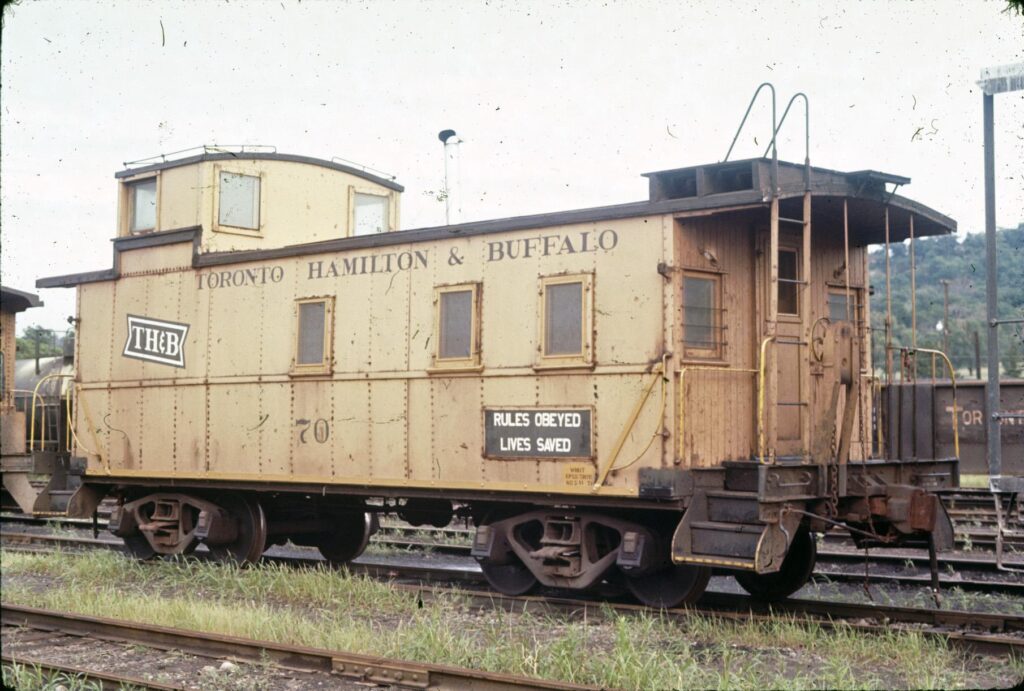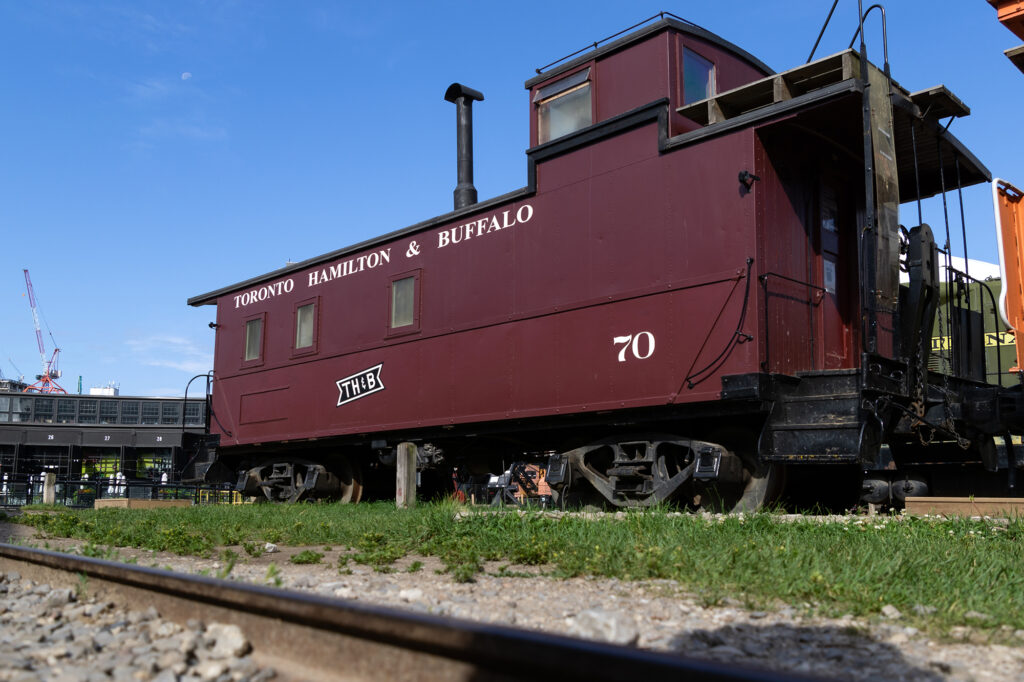This steel-sheathed, woodside caboose was constructed in 1921 by the TH&B Railway in its Aberdeen (Hamilton) shops using some components from caboose 51 acquired in 1907 from the Michigan Central Railroad. Its present appearance came about in the 1950′s when steel sheathing was added. Around 1954-1955 it received the yellow paint scheme already being applied to their boxcars since early 1952. The TH&B chose yellow and black from the colours of the Tiger Cats football team in Hamilton.
This caboose has been completely restored through the efforts of TRHA volunteers and is now an important attraction of the Toronto Railway Museum.
In addition to rear-end manual braking control, the purpose of the caboose was to provide a home-away-from-home for train crews while out on the road. In the steam era, freight train crews typically consisted of five men: the conductor, in charge of the train like the captain of a ship; the engineer, responsible for driving the locomotive; the fireman, responsible for maintaining boiler pressure, fuel and water supplies, etc.; and two brakeman, assigned to assist in switching and other train operations by applying brakes manually on standing freight cars, throwing switches, etc. One brakeman routinely rode in the locomotive cab with the engineer and fireman, while the other brakeman rode in the caboose with the conductor.
Until after World War II, there was no way for the engine crew to contact the caboose crew – which could be 3000 and more feet away on a long freight train – except by whistle, hand signals or lights. Radio revolutionized on-board train operations. The caboose contained a variety of accommodations, including office space for the conductor to take care of the paperwork associated with dropping off and picking up freight, as well as notices concerning the condition of the rolling stock and the state of the track. There were also bunks which served as benches during the day.
Often the crews would use their assigned caboose as a hotel when they had to layover at a terminal away from home. In addition to a stove for heating and cooking, the caboose often contained a source of drinking water and even an icebox on occasion. Until very late in their history, cabooses never had amenities such as toilets or showers.
A characteristic feature of the caboose is the cupola on the roof. This is an elevated observation post from which the crew can observe the behaviour of the train ahead. The cupola usually featured a brake line pressure gauge and an emergency brake valve – just in case. As freight cars grew in height and length during the 1960′s, the cupola gradually became useless and many railroads began to use cabooses equipped with bay windows instead.
Ultimately, with the reduction in train crew sizes from five to three and now even two people, as well as the perfection of braking equipment and of rear-end telemetry devices, the caboose was largely withdrawn from service in North America in the 1980′s. Some remain in use where industrial switching operations required lengthy backup moves.
The Toronto, Hamilton and Buffalo Railway existed from 1892 through 1987 as a separate railway serving the Hamilton area. It joined lines of its corporate parents, Canadian Pacific and New York Central (now CSX), and was established as alternative to the Grand Trunk or Canadian National route for Hamilton-area industries to ship products to customers in the United States and Canada.
This car has been generously donated by the Toronto & York Division of the Canadian Railroad Historical Association to the City of Toronto.





